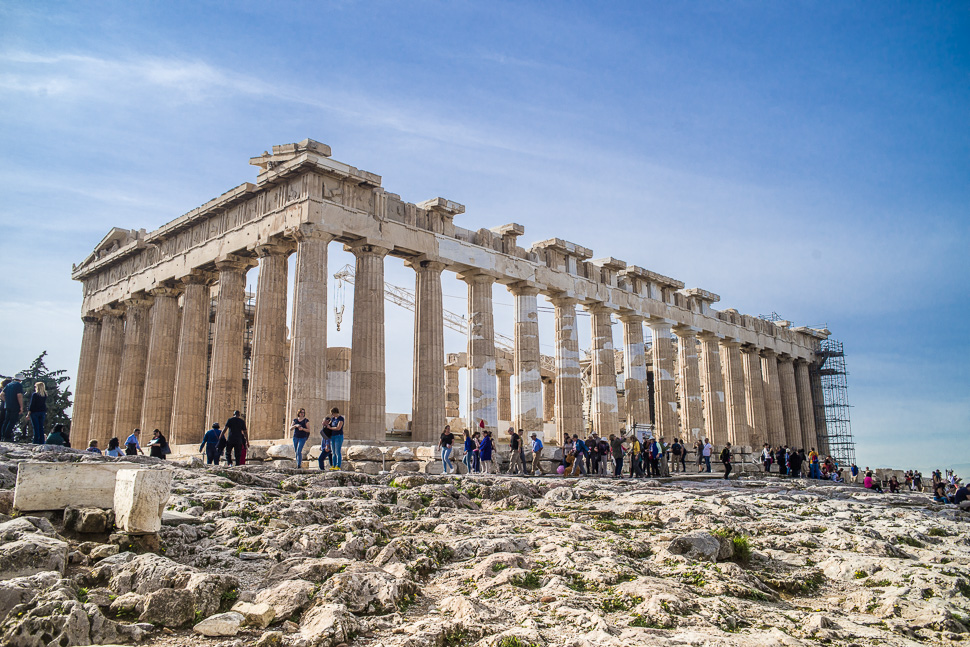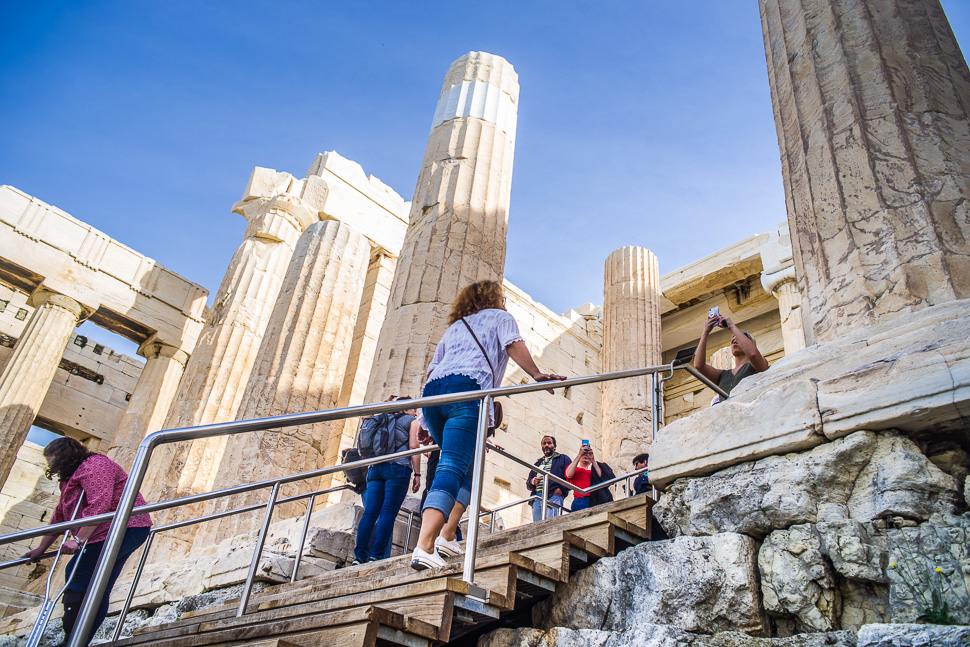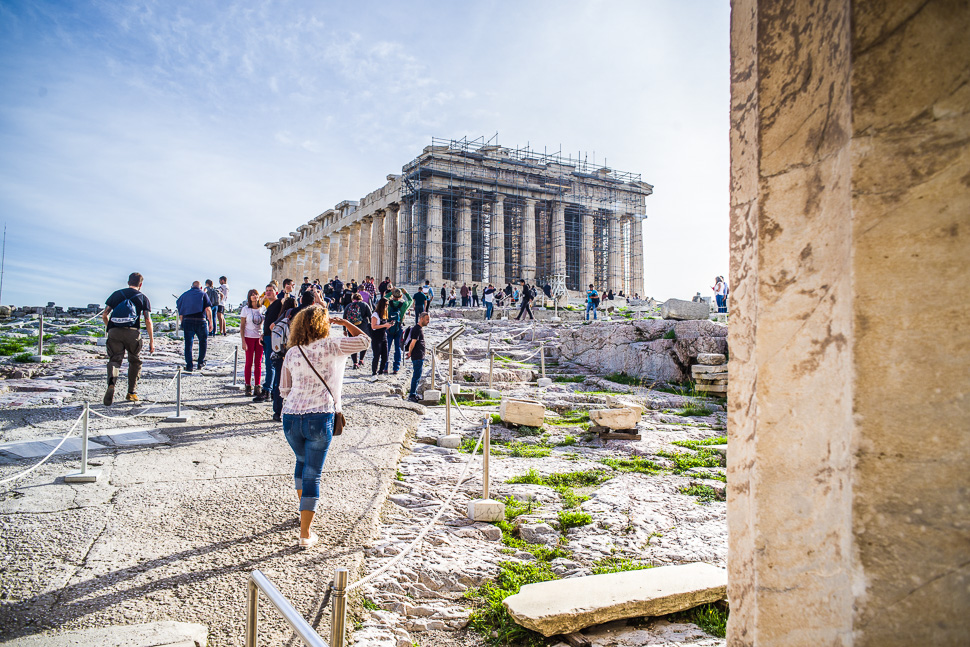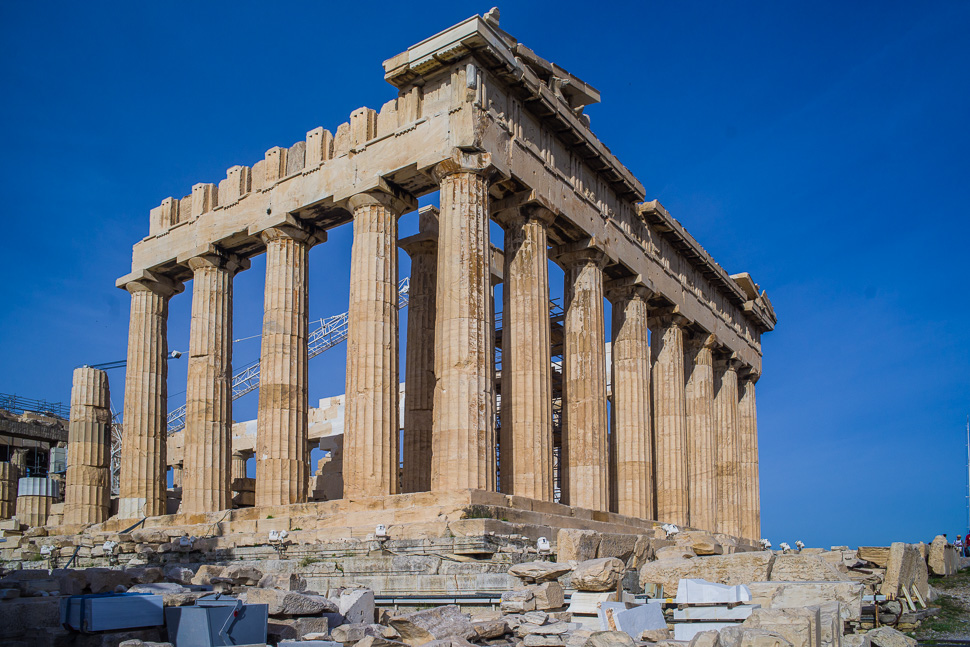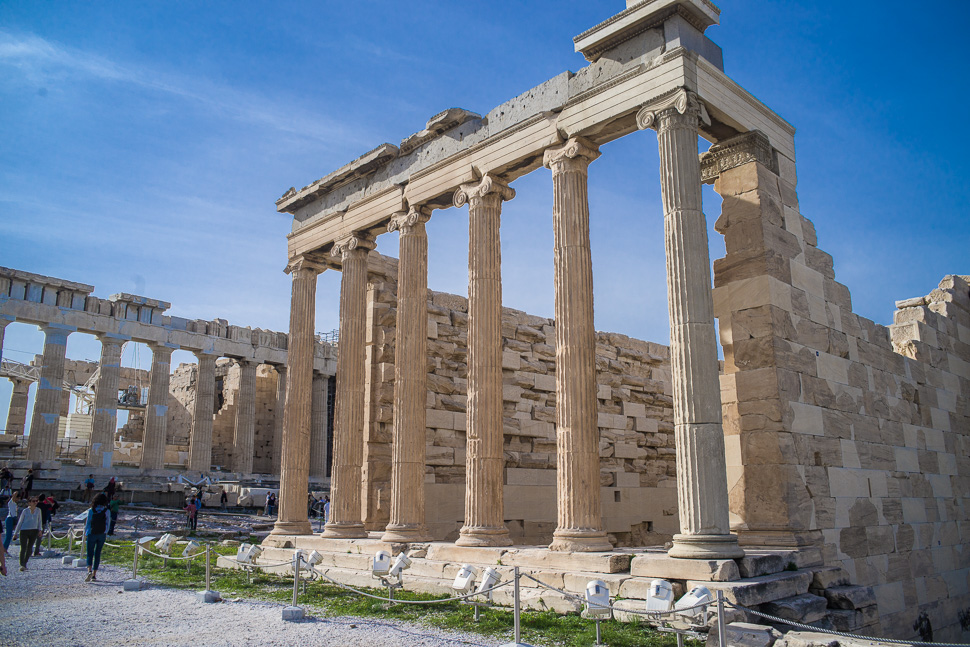Before flying back to Vienna for a week of work, we spent a day at Athens and visited the famous Acropolis.
Even in November many tourists crowded the hill, I can’t imagine how it is in summer.
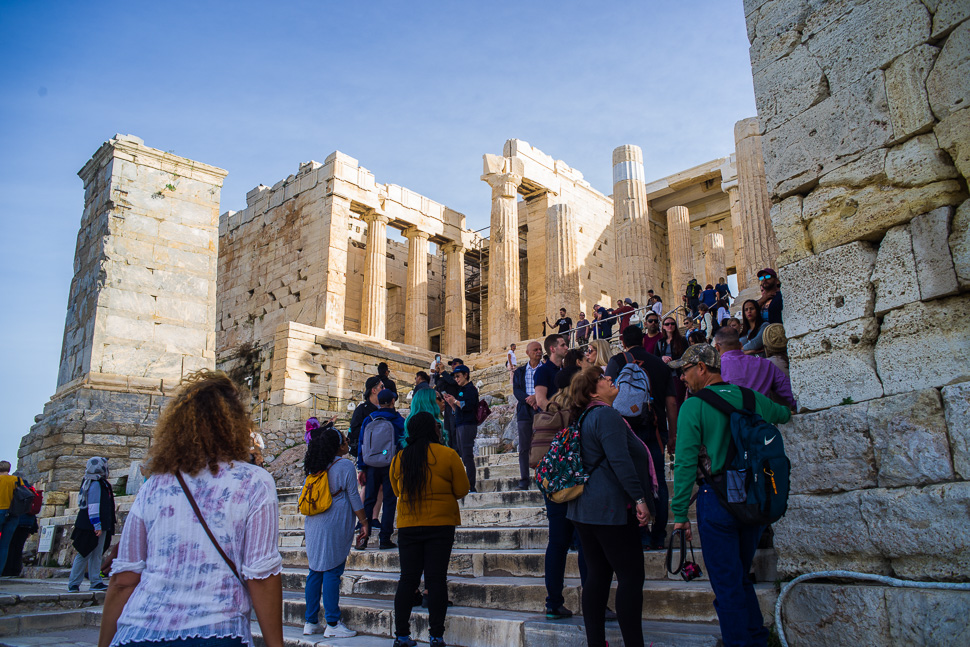 |
| Reaching the Propylaea – the entrance gate. |
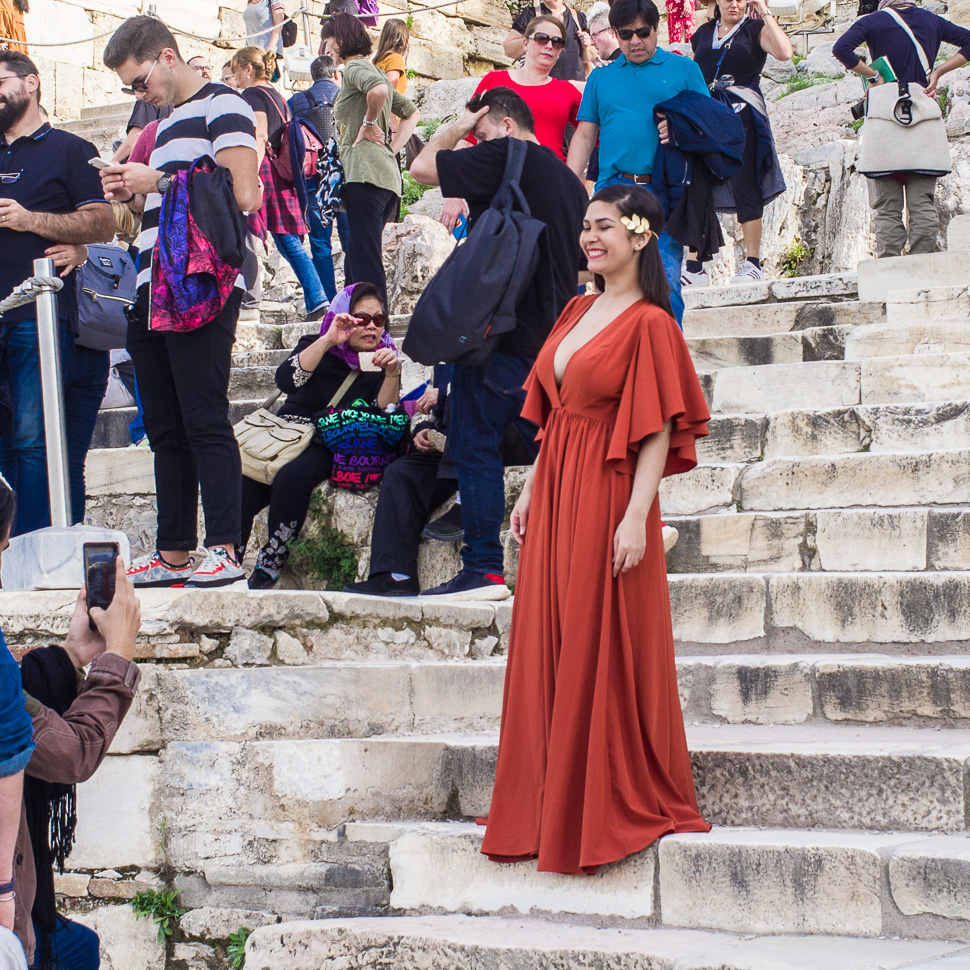 |
| We saw many people going there specially dressed to pose for a picture. |
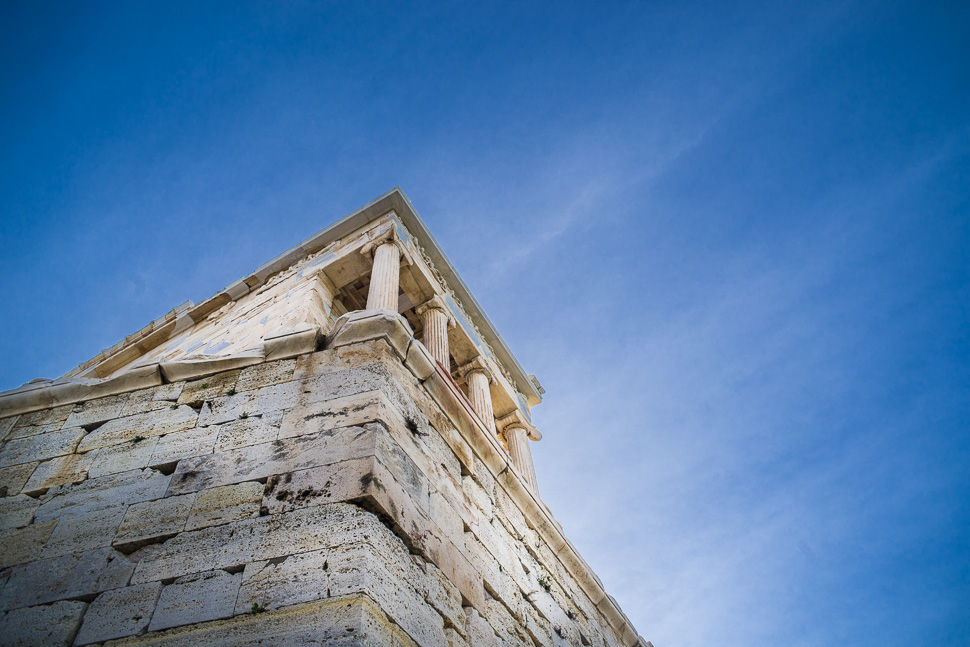 |
| Ionic temple dedicated to Athena Nike |
The entrance gate to the Acropolis is a prototypical Greek propylaea, which was the model for the Brandenburg Gate in Berlin.
The Parthenon dedicated to the goddess Athena, whom the people of Athens considered their patron was built from 447 BC onwards. It replaced an older temple of Athena which was destroyed during the Persian invasion of 480 BC. The Parthenon served also as the city treasury.
In the final decade of the 6th century AD, the Parthenon was converted into a Christian church and after the Ottoman conquest, it was turned into a mosque in the early 1460s. On 26 September 1687, an Ottoman ammunition dump inside the building was ignited by Venetian bombardment during a siege of the Acropolis. The resulting explosion severely damaged the Parthenon and its sculptures.
Since 1975 numerous large-scale restoration projects have been undertaken and are expected to be finished next year.
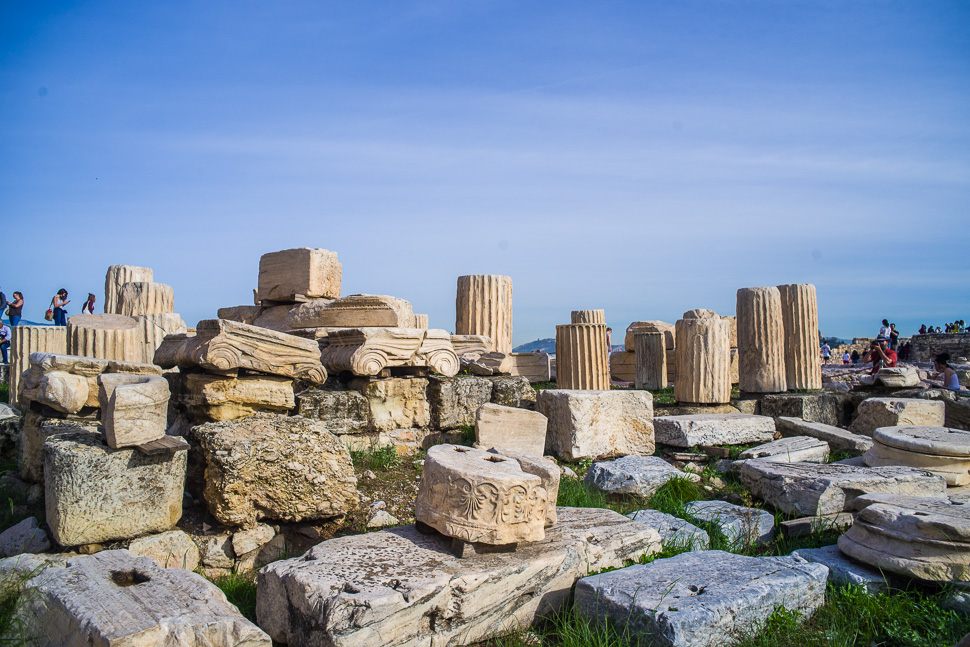 |
| Many parts still there to be assembled again |
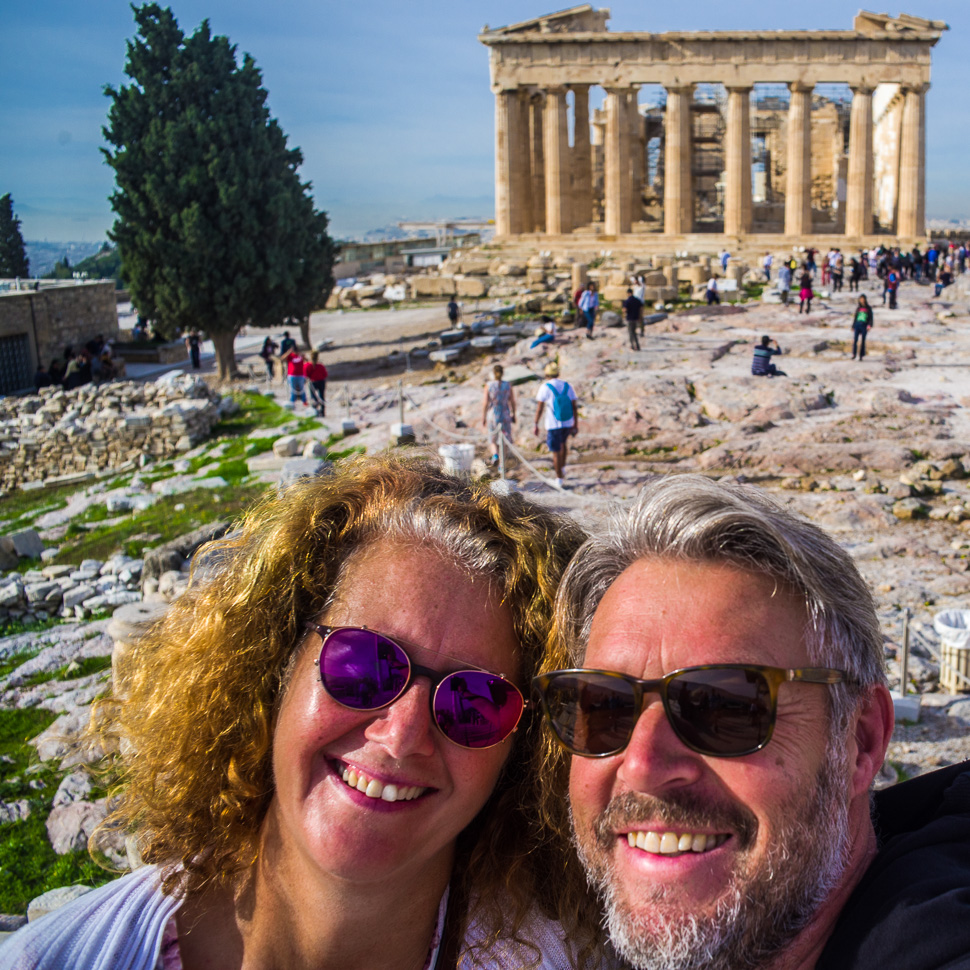 |
| Selfie Time! |
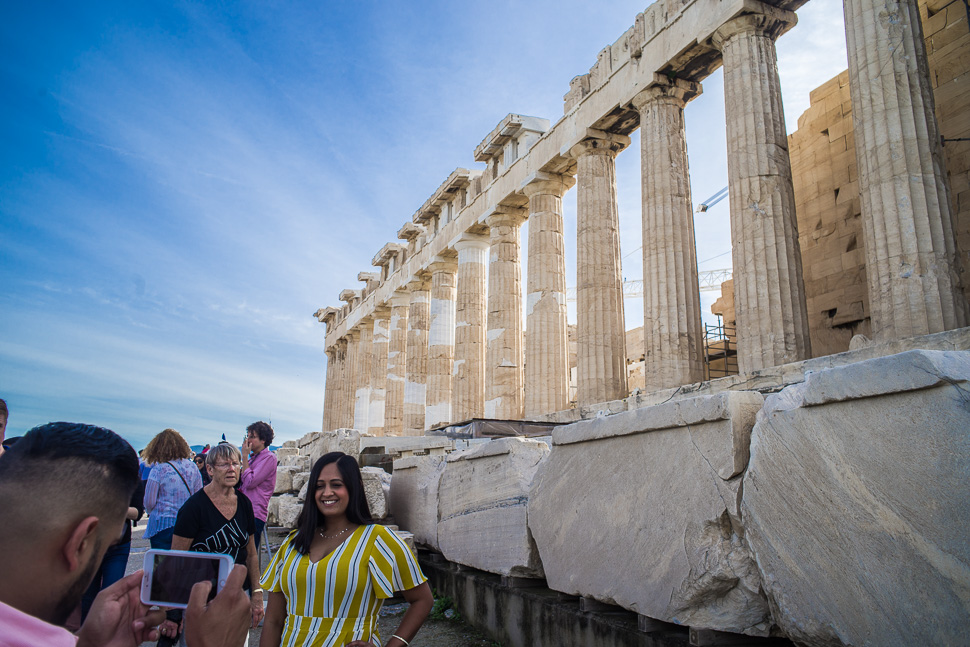 |
| Only the white parts of the columns had to be substituted |
The Erechtheion was dedicated to both Athena and Poseidon. It may have been built in honour of the legendary king Erechtheus, who is said to have been buried nearby. Erechtheus was mentioned in Homer’s Iliad as a great king and ruler of Athens during the Archaic Period (700 – 480 BC).
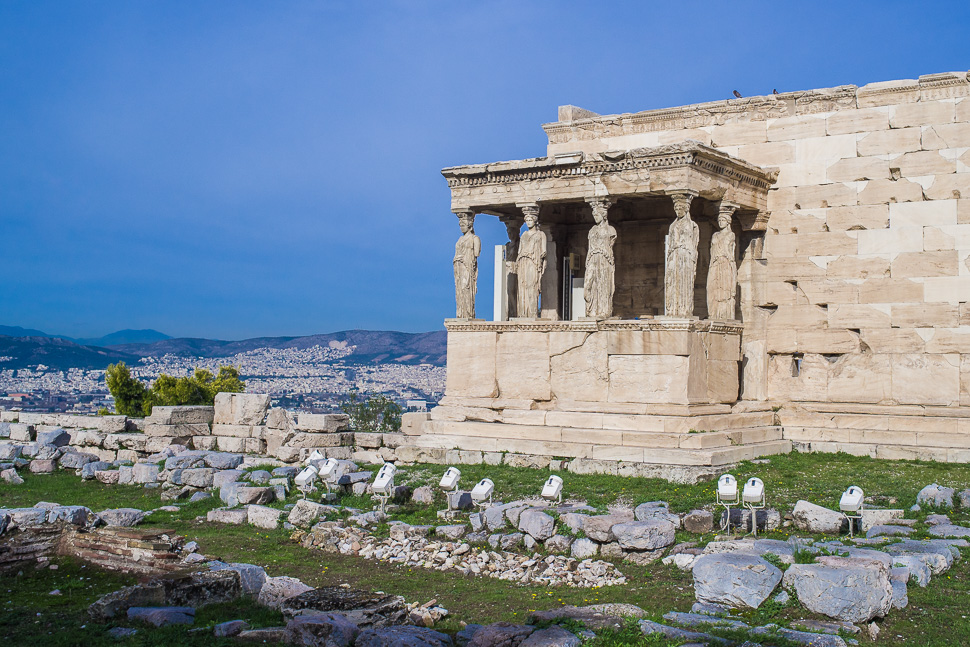 |
| Porch of the Maidens at the Erechtheion |
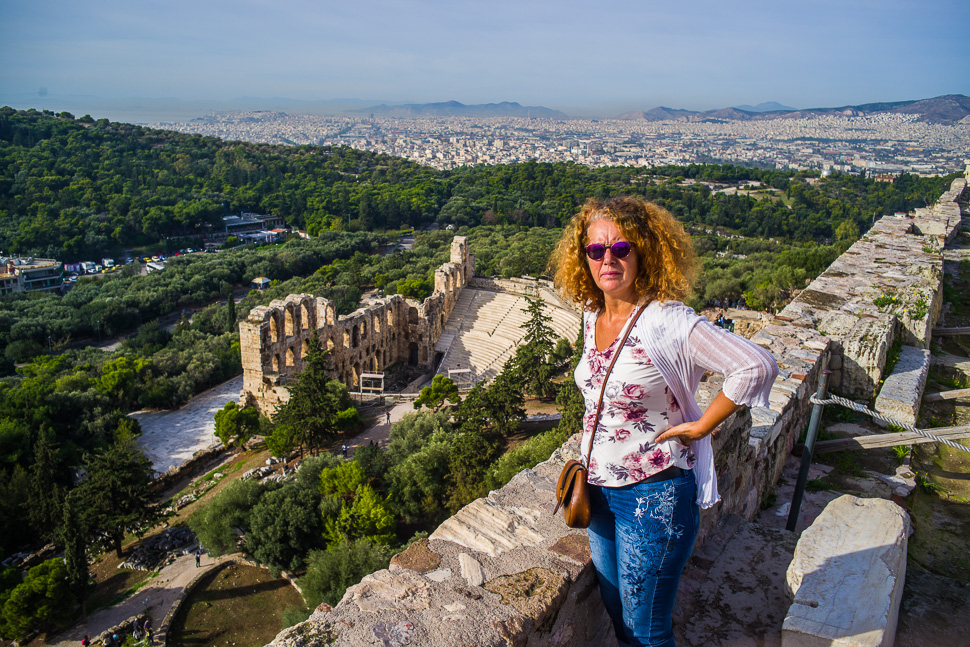 |
| Below the Odeon of Herodes Atticus, we saw a Roman theatre completely restored and in use again. |
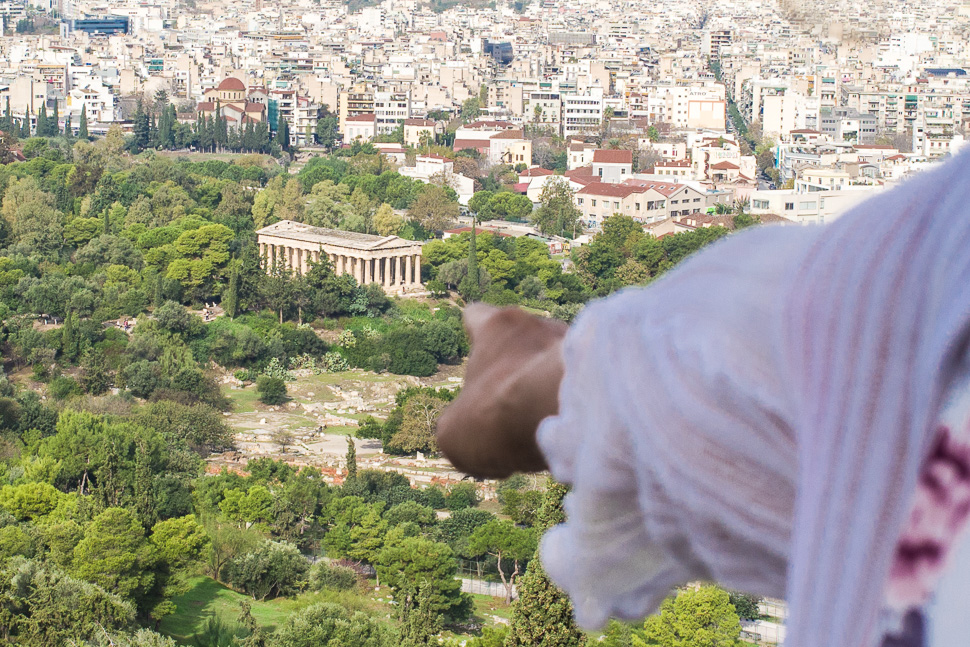 |
| What’s that down there? The Temple of Hephatestus – a very well-preserved Greek temple! |
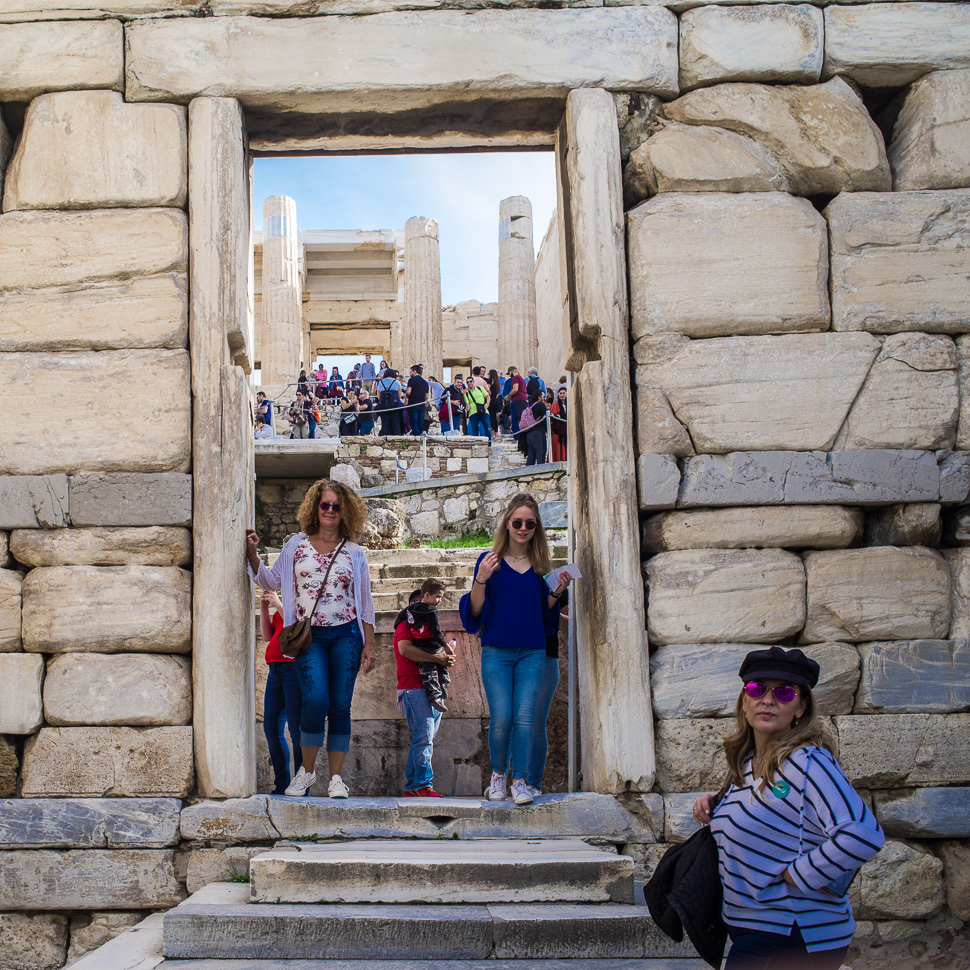 |
| Impressive entrance |
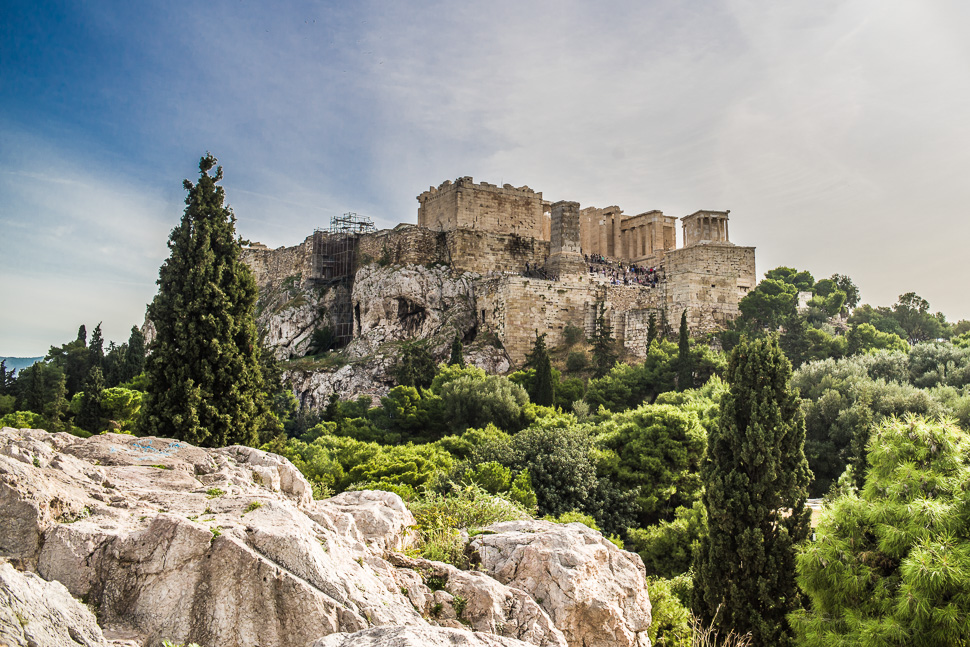 |
| View back from below |
